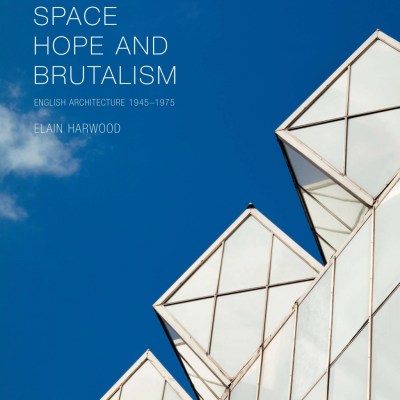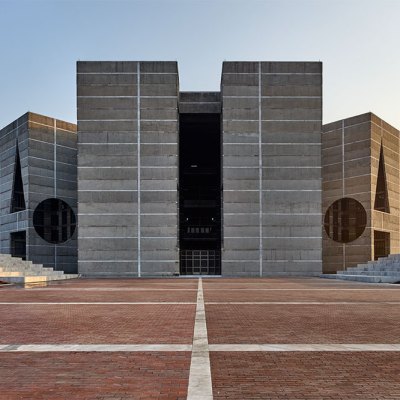From the November 2023 issue of Apollo. Preview and subscribe here.
The Ian Nairn revival is now more than a decade old. It may be time to declare him fully revived. The architecture critics’ architecture critic died in 1983, and his memory spent the next quarter of a century in shade. But in the first decade of the 21st century, he was being rediscovered by a young, online generation of architecture writers as a blogger avant la lettre: fiery, pithy, funny and unpredictable but uncompromising in his verdicts. Meanwhile a more senior generation was dutifully appraising its debt to Nairn.
In 2013 Ian Nairn: Words in Place by Gillian Darley and David McKie was published – part biography, part testimonial. The authors regretted that none of Nairn’s books were still in print. This was about to change. In 2014, Penguin reissued Nairn’s London, an unorthodox guide to the capital which, alongside the ‘Outrage!’ column for the Architectural Review, form the bedrock of his reputation. Since then, Notting Hill Editions have been working through the rest of his backlist, republishing Nairn’s Towns, Nairn’s Paris and, most recently, Modern Buildings in London in their delicious little hardbacks. We have more Nairn at our fingertips now than was the case 40 years ago.
Each of these new editions has been accompanied by new introductions, postscripts, essays and praiseful reviews, so it’s not hard to find descriptions of Nairn’s appeal – and anyone in search of it should proceed directly to Nairn, not third parties. But part of that appeal is precisely its maverick, elusive nature. His genius with a phrase is naturally central, such as describing the contrast between giant Stepney gasholders and the Italianate gas showroom as being ‘like keeping a hippo in a patio garden’. His choice of subjects also matters, treating the mundane (like those gasholders) with the same weight as the monumental, and being equally ready to praise or damn either – his curt dismissal of Eltham Palace is as bracing as his praise of Soho. He was not a partisan for a particular style but an advocate of human qualities, finding them in the modern almost as often as the antique.
New Zealand House on the corner of Haymarket and Pall Mall in London: ‘a professional triumph, in the sense that a building of the same height and shape could have been terrible.’ Photo: Angelo Hornak/Alamy Stock Photo

Importantly he was a dilettante, an outsider, but unafraid in his views. His example gave permission to two or three generations of writers and critics and, beyond the profession, he inspired readers to open their eyes in town. But influence can be an intrusive part of a reputation, and reverence is not a very Ian Nairn quality. Let’s close our ears to the chorus for a moment and look at what can be gathered from the reissue of a 60-year-old guidebook now that all the new buildings within it are eligible for a bus pass.
Bus passes are relevant, in fact. Modern Buildings in London was first published in 1964 by London Transport as part of a series of guides intended to get people on to Tube, bus and coach. 1964 was an auspicious moment for such a guide. Building licences had been abolished ten years before and new construction was ubiquitous, so there was plenty to see. Projects that would later become synonymous with modern architecture in London – such as the Economist building, the Barbican and the non-Festival parts of the South Bank – were still to come. But an ill wind was blowing. The missed opportunities and the botch jobs were mounting up. Nairn once said that he ‘read town centres like a detective novel’ – in 1964 there might not be a body yet, but we are being introduced to suspects and motives.
So the reader might be surprised at how much negativity or faint praise there is in a book that might be expected to have a more cheerleading tone. But it is still a guidebook, intended to guide – how does it hold up 60 years on?
I visited every entry in the West End and Soho chapter to see how Nairn’s views from 1964 measured up to 2023. It’s a very slim guide so this is only ten locations. And it’s a curiously lopsided collection, with just one building in Soho, a block of council flats on Berwick Street. Given Nairn’s fondness for Soho this seems strange until one considers that he doesn’t like it for its modern buildings, and his main line of praise for Berwick Street is that it doesn’t mess things up too badly. He is scathing about the ‘improvement’ of Marble Arch to accommodate a widened Park Lane, and rightly so – seeing it still a dreary mess more than half a century later gets a real Nairn-ish anger flowing.
There are losses. Inevitably Peter and Alison Smithson’s shop interior for Iraqi Airways on Piccadilly is long gone. Saarinen’s US Embassy is technically still there but has been gutted. Nairn didn’t like it, so no loss I suppose: ‘One of the biggest disappointments in London.’ Katz & Vaughan’s Washington Hotel on Curzon Street, which Nairn calls ‘elegant yet robust […] exactly right […] aristocratic’, was given an atrocious ‘contextual’ reclad at some point and is now none of those things. Schomberg House on Pall Mall – a 17th-century house mutilated in the 19th century and healed in the 1950s – is an example of contextualism done right and is as invisible now as it was in 1964.
Apartment block at 26 St James’s Place in London, designed by Denys Lasdun & Partners in 1960. Photo: Behr Photography; courtesy RIBA Collections Apartment block at 26 St James’s Place in London, designed by Denys Lasdun & Partners in 1960. Photo: Behr Photography; courtesy RIBA Collections

Invisibility is an important Nairn quality. More than once in Modern Buildings in London – such as at the appropriately named Hide Tower in Westminster – he admires a building for how unobtrusive it is. In the West End, this applies to the Admiralty Citadel on the Mall, a wartime bunker in a ghillie suit, and New Zealand House on Haymarket. The latter is an elegant modern tower which make a successful contribution to a very sensitive location and is now being refurbished with apparent tact. I gazed at it with embarrassed appreciation – why had I never really looked at it before? And the same was true of Denys Lasdun’s flats on St James’s Place, another hit with Nairn: ‘a masterpiece’.
This spur to look again is the strength of this book for the 21st-century reader. Buildings that have been in view for 60 years suddenly look something like new. There’s nothing unobtrusive about the Hilton Hotel at Hyde Park Corner, but I’ve seen it so often I never think about it. Nairn reckons this ‘white buffalo’ much better than feared: ‘a mid-Western bellow amongst discreet coughs’. That’s praise. Do I like it? Well, yes and no. But that’s not what matters. I see it now.
From the November 2023 issue of Apollo. Preview and subscribe here.



